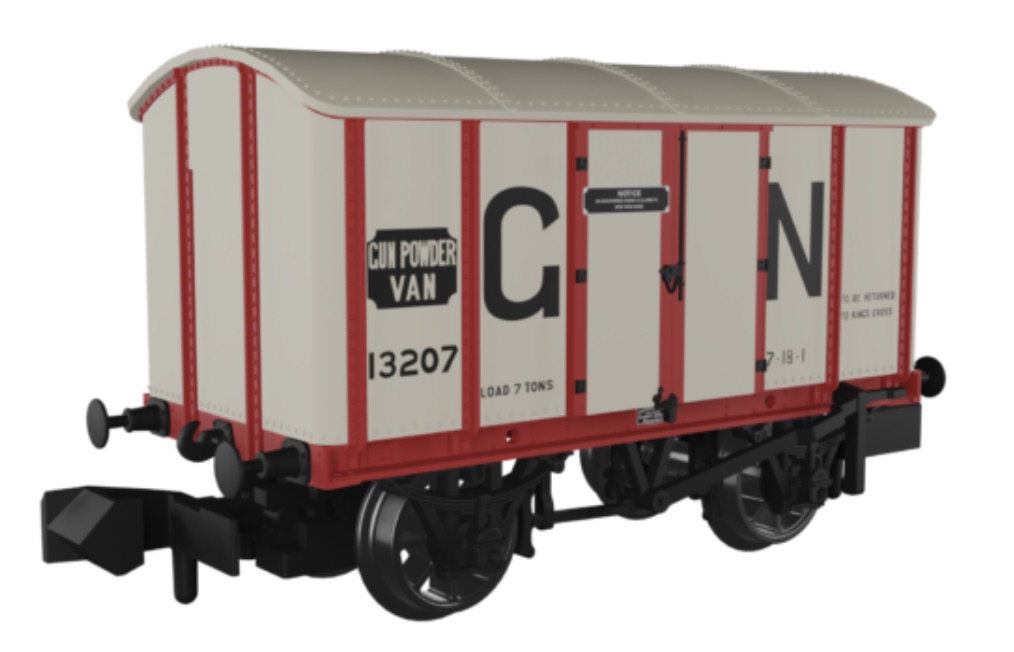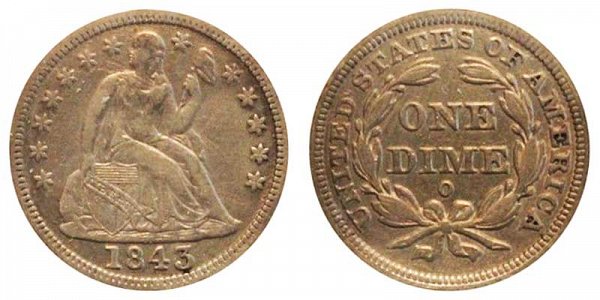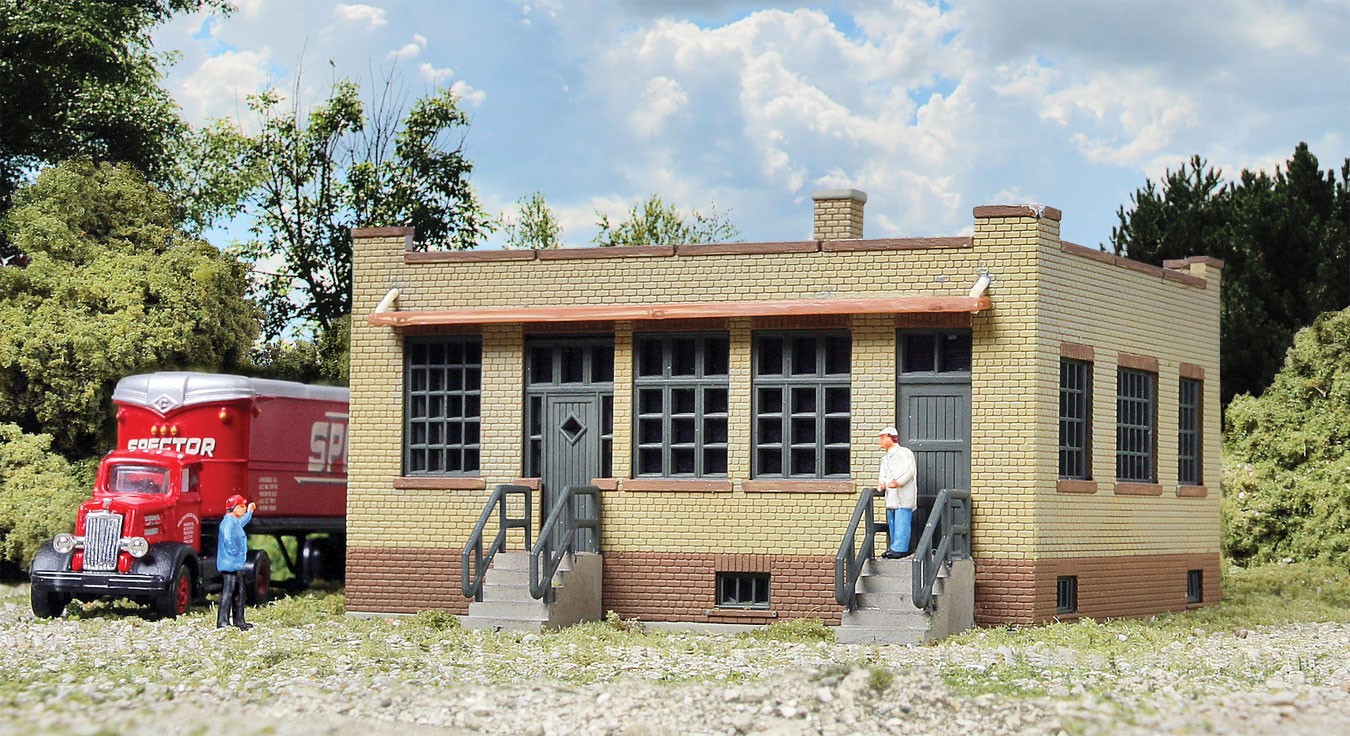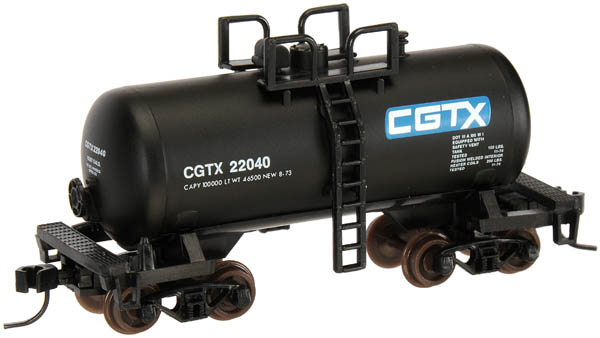Specific Item Information: Road Numbers: Wagon 1 – L&Y No.30897 (plated end vents, double sided 2-shoe brakes and GPV doors) Wagon 2 – LNWR No.13591 (plated end vents, double sided 4-shoe brakes and GPV doors) Wagon 3 – Great Northern No.13207 (plated end vents, single sided 2-shoe brakes and GPV doors)
Road Name History: 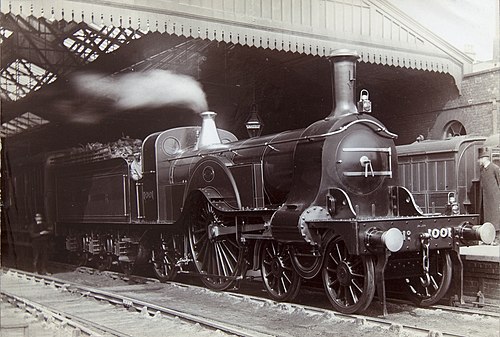 The Great Northern Railway (GNR) was a British railway company incorporated in 1846 with the object of building a line from London to York. It quickly saw that seizing control of territory was key to development, and it acquired, or took leases of, many local railways, whether actually built or not. In so doing, it overextended itself financially.
The Great Northern Railway (GNR) was a British railway company incorporated in 1846 with the object of building a line from London to York. It quickly saw that seizing control of territory was key to development, and it acquired, or took leases of, many local railways, whether actually built or not. In so doing, it overextended itself financially.
Nevertheless, it succeeded in reaching into the coalfields of Nottinghamshire, Derbyshire and Yorkshire, as well as establishing dominance in Lincolnshire and north London. Bringing coal south to London was dominant, but general agricultural business, and short- and long-distance passenger traffic, were important activities too. Its fast passenger express trains captured the public imagination, and its Chief Mechanical Engineer Nigel Gresley became a celebrity.
Anglo-Scottish travel on the East Coast Main Line became commercially important; the GNR controlled the line from London to Doncaster and allied itself with the North Eastern Railway and the North British Railway so as to offer seamless travel facilities.
The main line railways of Great Britain were "grouped" following the Railways Act 1921 into one or other of four new larger concerns. The Great Northern Railway was a constituent of the London and North Eastern Railway, which took control at the beginning of 1923. Although many local lines have been closed, much of the network is active today.From Wikipedia

Nevertheless, it succeeded in reaching into the coalfields of Nottinghamshire, Derbyshire and Yorkshire, as well as establishing dominance in Lincolnshire and north London. Bringing coal south to London was dominant, but general agricultural business, and short- and long-distance passenger traffic, were important activities too. Its fast passenger express trains captured the public imagination, and its Chief Mechanical Engineer Nigel Gresley became a celebrity.
Anglo-Scottish travel on the East Coast Main Line became commercially important; the GNR controlled the line from London to Doncaster and allied itself with the North Eastern Railway and the North British Railway so as to offer seamless travel facilities.
The main line railways of Great Britain were "grouped" following the Railways Act 1921 into one or other of four new larger concerns. The Great Northern Railway was a constituent of the London and North Eastern Railway, which took control at the beginning of 1923. Although many local lines have been closed, much of the network is active today.From Wikipedia
Item created by: CNW400 on 2024-01-11 15:10:50. Last edited by CNW400 on 2024-01-11 15:19:59
If you see errors or missing data in this entry, please feel free to log in and edit it. Anyone with a Gmail account can log in instantly.
If you see errors or missing data in this entry, please feel free to log in and edit it. Anyone with a Gmail account can log in instantly.


